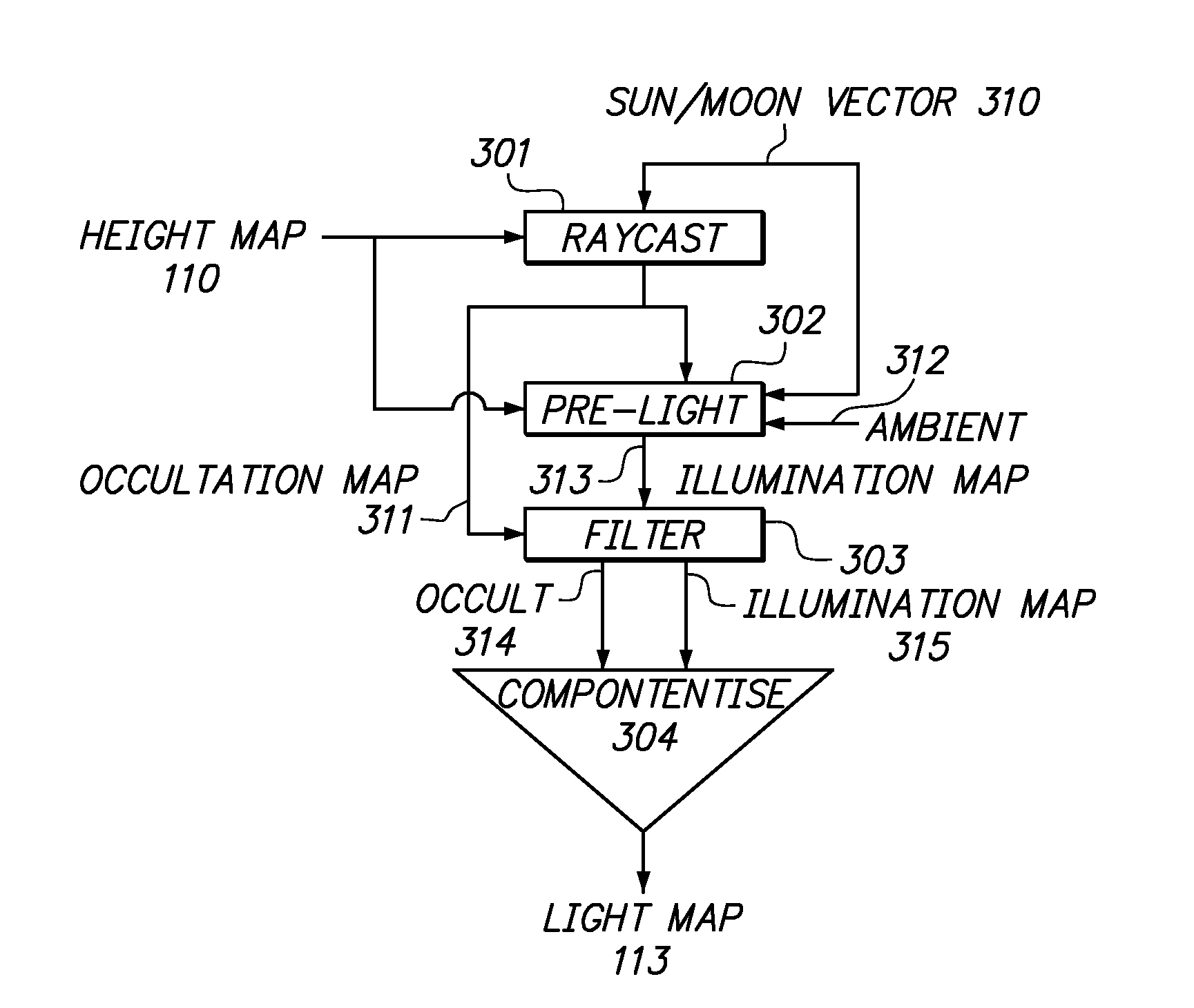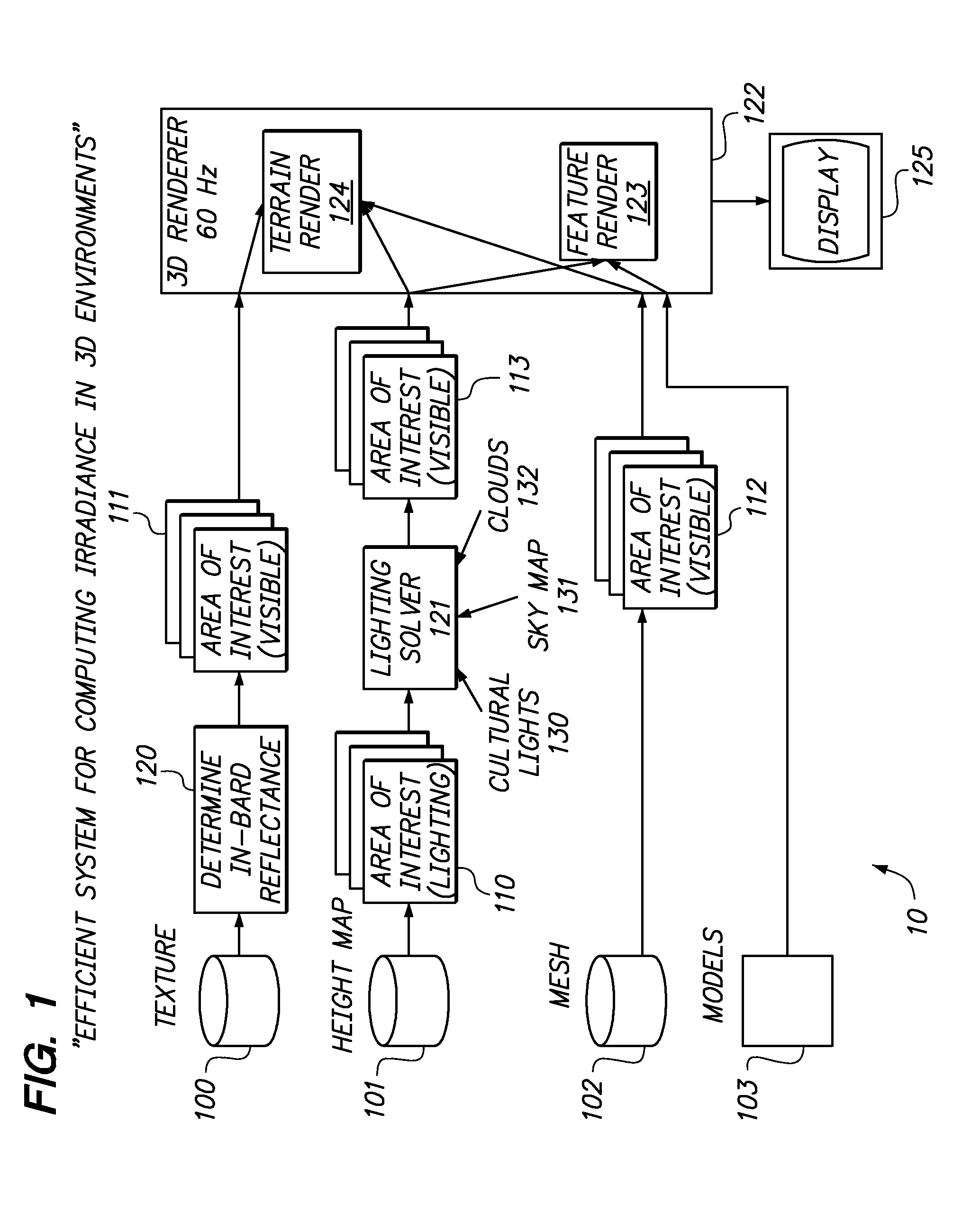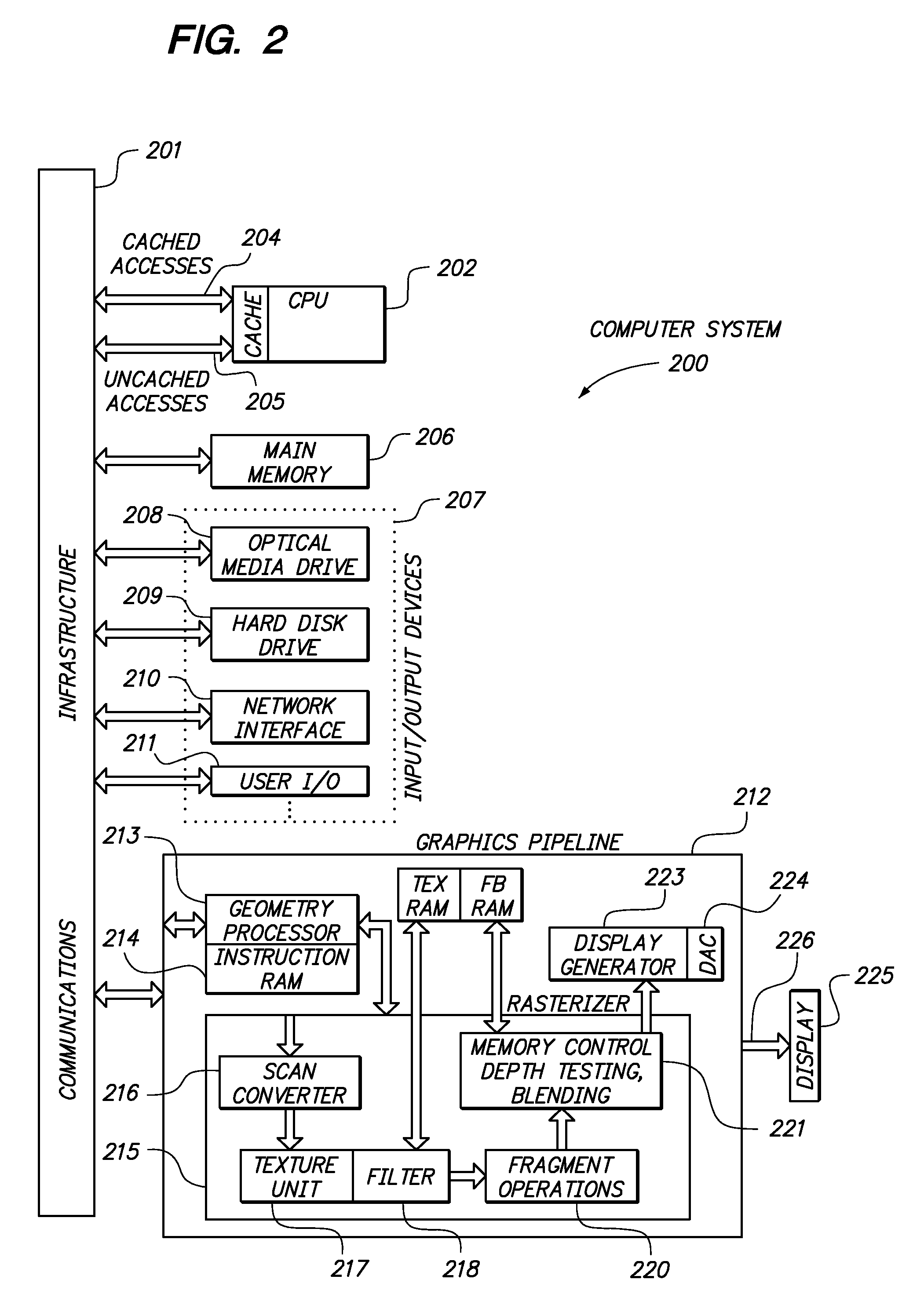Efficient illumination of large three dimensional environments
a three-dimensional environment and efficient technology, applied in the field of computer graphics, can solve the problems of inefficient illumination, sheer scale of the environment, and inability to model the history of each photon in this way at any reasonable rate, and achieve the effect of efficient determination of illumination
- Summary
- Abstract
- Description
- Claims
- Application Information
AI Technical Summary
Benefits of technology
Problems solved by technology
Method used
Image
Examples
Embodiment Construction
[0036]FIG. 2 depicts an example of a computer system 200 equipped with a three-dimensional graphics pipeline 212 in accordance with an embodiment of the present invention. The graphics pipeline is one embodiment of a three-dimensional renderer or a real-time three-dimensional renderer. Computer system 200 may be used to render all or part of a scene mapped in accordance with the present invention. This example computer system is illustrative of the context of the present invention and is not intended to limit the present invention. Computer system 200 is representative of both single and multi-processor computers.
[0037]Computer system 200 includes one or more central processing units (CPU), such as CPU 202, and one or more graphics subsystems, such as graphics pipeline 212. One or more CPUs 202 and one or more graphics pipelines 212 can execute software and / or hardware instructions to implement the graphics functionality described herein. Graphics pipeline 212 can be implemented, fo...
PUM
 Login to View More
Login to View More Abstract
Description
Claims
Application Information
 Login to View More
Login to View More - R&D
- Intellectual Property
- Life Sciences
- Materials
- Tech Scout
- Unparalleled Data Quality
- Higher Quality Content
- 60% Fewer Hallucinations
Browse by: Latest US Patents, China's latest patents, Technical Efficacy Thesaurus, Application Domain, Technology Topic, Popular Technical Reports.
© 2025 PatSnap. All rights reserved.Legal|Privacy policy|Modern Slavery Act Transparency Statement|Sitemap|About US| Contact US: help@patsnap.com



